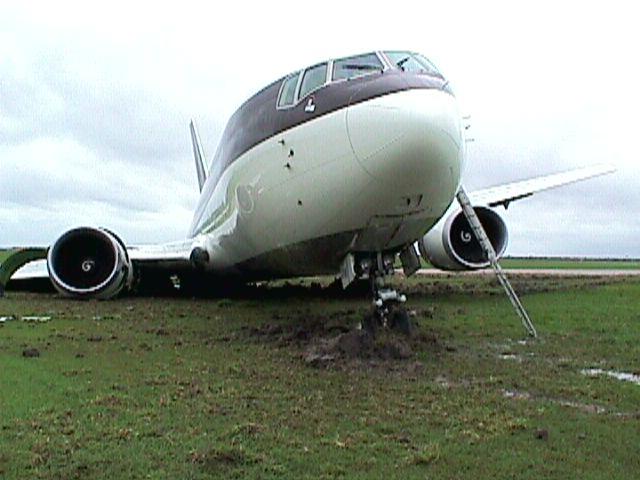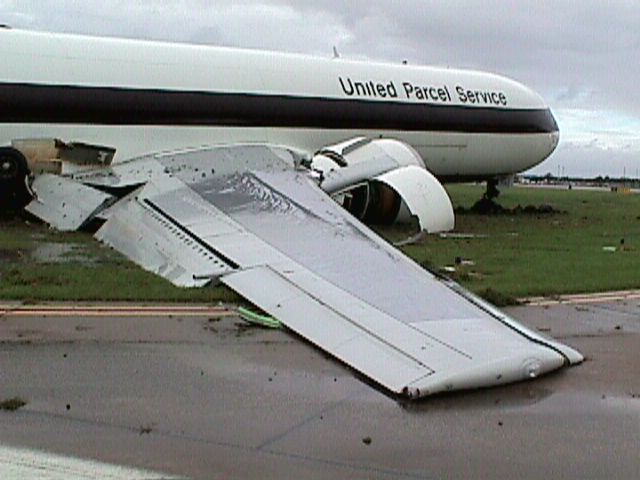
On September 11, 1998, a Boeing 767 operated by UPS, was substantially damaged following a loss of control during the landing roll at the Ellington Field Airport near Houston, Texas. The two airline transport rated pilots were not injured. The airplane was owned and operated by United Parcel Service Co., of Louisville, Kentucky. Meteorological conditions prevailed for the scheduled cargo flight for which an IFR flight plan was filed.
The flight was dispatched from the UPS main hub in Louisville for the scheduled one hour and fifty minutes flight to Ellington Field. The flight crew reported that the en route portion of the flight was uneventful. The weather in south Texas was influenced by tropical storm "Frances." The crew was aware of the weather at their destination, and made several attempts while en route to obtain updated weather data for the area. After executing a missed approach on their first ILS approach to runway 17R, the flight was vectored around the weather for a second approach to the same runway.During the vectoring sequence, the controller suggested the ILS approach for runway 35L to avoid thunderstorms transiting near the final approach course for runway 17.


The crew accepted the offer and the airplane was vectored for the Cat I ILS approach to runway 35L. The crew stated that the airplane was configured for an "autoland" approach and landing, with the auto-brakes set to the number 4 setting for the landing on the 9,000 foot (not grooved) wet runway.
The crew reported that the approach was stabilized and uneventful, establishing visual contact with the runway environment at 1,000 feet MSL. The captain stated that the airplane touched down slightly left of centerline and heengaged the thrust reversers as soon as the nose gear was on the ground; however, there was "no feel of deceleration" from either the brakes or the reversers.
Both crew members concurred that the forward visibility deteriorated during the landing roll. They also reported that the airplane's autoland system continued to attempt to correct the ground track of the airplane towards the centerline of the runway. Preliminary FDR information revealed that the airplane touched down at a ground speed of 149 knots (144 calibrated).
Tire tracks visible on the concrete surface of the runway indicated that after touchdown, the aircraft gradually drifted to the left of centerline towards the left (west) edge of the runway. The tire marks on the concrete surface of the runway gave the appearance of being "steam cleaned or sandblasted." The airplane came to rest on the grass adjacent to the runway on a heading of 292 degrees, approximately 1,489 feet from the point where the left main gear first departed the hard surface area of the runway.
The right main landing gear strut fractured during the off
runway excursion and the dual tandem wheel truck penetrated the airframe.
The right engine separated from the pylon subsequent to ground impact.
There was no fire. Heavy rain showers prevailed throughout the area at
the time of the accident. Airport personnel reported standing water near
the intersection of runway 35L and taxiway Delta. The winds issued by the
tower to the flight crew on short final were from 090 degrees at 15 knots,
gusting to 23 knots.
| ŠAvStop Online Magazine Contact Us Return To News |